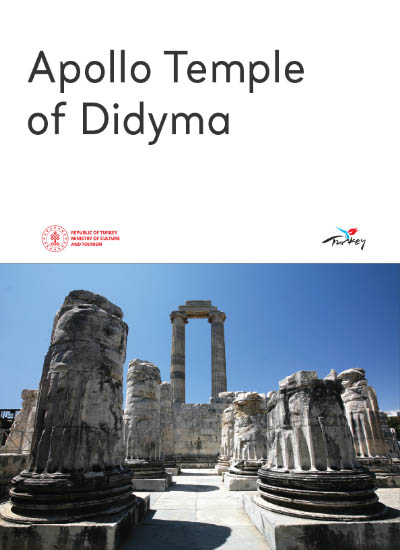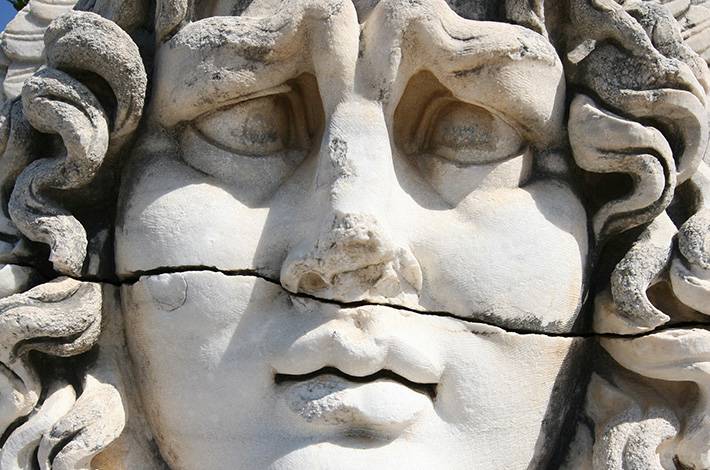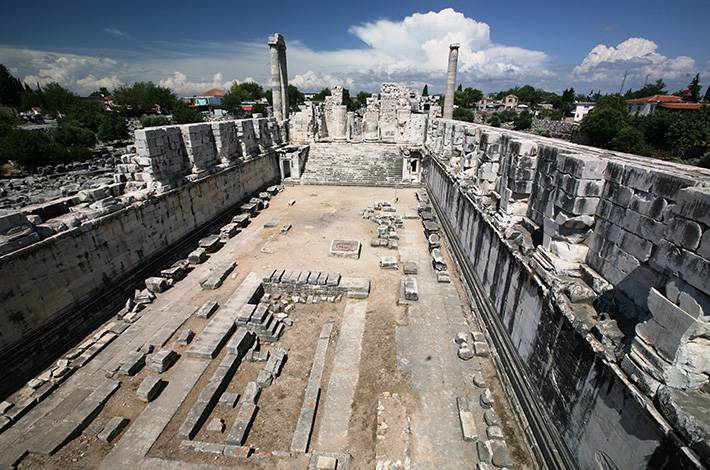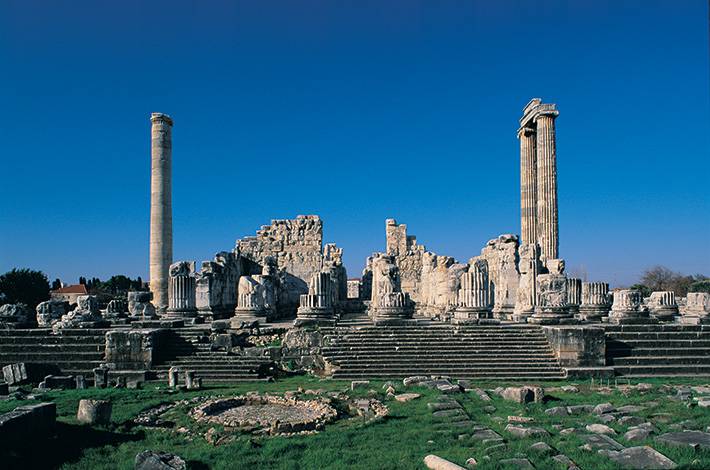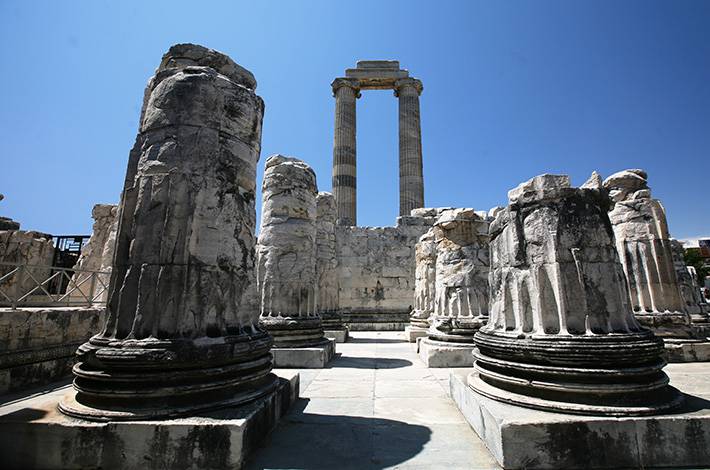The World's Third Largest Ionic-Style Temple The Temple of Apollo is widely regarded as one of the best-preserved ancient temples. It was excavated between 1906-1913 and partially reconstructed. The first excavations also included the construction of a protective wall around the temple area and some of the architectural elements. The temple follows the dipteral plan type, with a double column row surrounding it from the outside. The open-top courtyard is the only non-canonical element of the temple, with no stone cladding on the floor. Within the courtyard, there was a small temple (naiskos) and a holy water spring. The temple served as a significant prophecy center during antiquity. Construction of the temple began in BC 453, but it was never fully completed. Despite this, the pioneering temple gained fame during that period. Unfortunately, it was destroyed by the Persians in the early 5th century BC. The early temple's foundations are still visible in the atrium. During the Christian era, the naiskos of the Hellenistic period, which was located in the atrium, was removed, and a Christian basilical church was built in its place. The basilica was destroyed by an earthquake. Medusa, Guardian Of The Temple Sthenno, Euryale, and Medusa were three sisters who had snakes instead of hair, brazen claws, and terrifying eyes that turned anyone who looked at them into stone. They were known as the 'Gorgons', which means 'terrifying' in ancient Greek. Medusa was the only mortal of the three sisters. The Greeks embroidered the head of Medusa on their shields, articles they wished to protect, temples, and armor. While You Are Here Bafa Lake, located near Didim, and its surrounding areas, are ideal for bird watching. Other nearby areas worth visiting include the Dilek Peninsula National Park, the Menderes River delta, and Karina and Kazıklı Coves.
DIDIM ARCHAEOLOGICAL SITE
